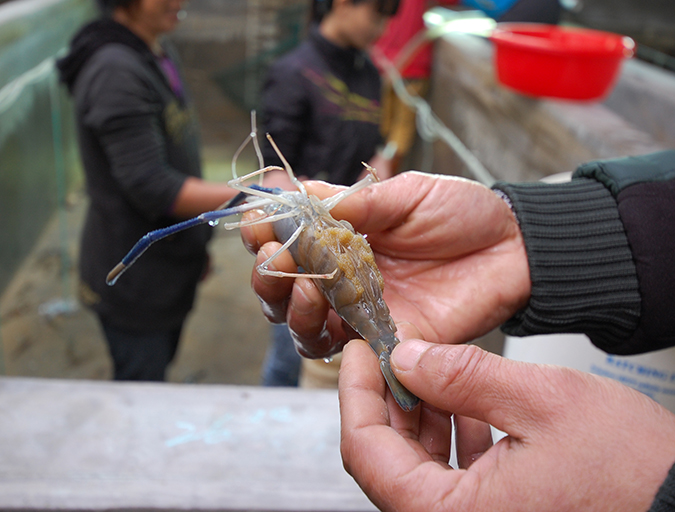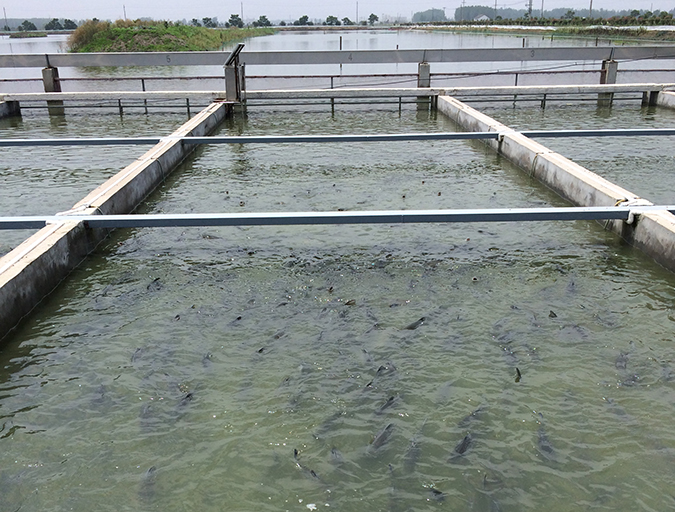Fresh food purchasing behavior of 1,500-plus consumers finds higher confidence in seafood than produce

Food is basic for human survival, and the economic development and living standards of a society affect consumers’ choices of food. During the “starving period” for China, having enough food was consumers’ primary goal. With economic development and adequate food supplies, food quality and safety have gained more attention among Chinese consumers. The question is not how to feed China but how to feed China with safe and healthy foods.
Although the standards and regulations related to food quality and safety have been gradually improved, the issues of food quality and safety are becoming more urgent, especially after serious food safety scandals in China, such as Sanlu’s melamine-tainted milk incident. These have affected Chinese consumer confidence in food.
Consumers are demanding more food quality and safety information. It is essential to increase transparency and traceability of food production along the supply chain. To improve the regulatory efficiency, Chinese government has invested considerable manpower and financial resources, established a regulatory system, and published food quality and safety information to the public on a regular basis. For this article, we explored what kinds of food safety and quality information consumers are looking for and how their purchasing behavior will be affected in order to help provide suggestions on the government monitoring system and information disclosure mechanism.

Data sources
Data used for this article come from surveys conducted in eight major cities in China. A total of 1,800 consumers were interviewed and 1,573 responses were valid. Survey locations focused on farmers’ markets, supermarkets, food shops, convenience stores and other retail outlets. The geographic distribution of the survey included Beijing and Guangzhou (300 surveys each), and Shanghai, Zhengzhou, Chengdu, Xi’an, Harbin and Qingdao (200 surveys each). The survey was supported by the National Nature Sciences Foundation of China (No. 71103197), China Scholarship Council (No. 201303260021) and Chinese Academy of Fishery Sciences (No.2014C001).
Characteristics of respondents
Gender distribution: Women often play more important role in household food purchasing decisions. In the survey, 53.5 percent of the respondents are women (Fig. 1). The majority of women (63.3 percent) tend to buy fresh food.
Age structure: Nearly 95 percent of the respondents are between 18 and 60 years old. About one third are between 18 and 29 years old, less than one third are between 30 to 39 years old and around one third are 40 to 49 years old (Fig. 1).
Education: The majority of the respondents have bachelor degrees (62.4 percent), while 16.3 percent of them have a high school education (Fig. 1).
Family structure: More than half of the respondents (56.6 percent) have children under 15 years old and 43.7 percent of the respondents have elders in the households. This is consistent with the national statistics. It is estimated that the households with elders or kids may pay more attention to food quality and safety issues.
Health status: The overall health status of the samples is not optimistic. Only 30.1 percent of the respondents indicate their families are in good health condition.

Monthly household income: Nearly half of the respondents have a monthly household income ranging between 1001 and 3000 RMB ($159 to $476; 1$=6.3 RMB) and about 20 percent ranging between 3001 and 5000 RMB ($476 to $794).
Consumers’ awareness of food safety incidents
The results show that most consumers (86 percent) care about fresh food quality and safety issues. However, more consumers are concerned about meat and vegetables than fruit and seafood. Consumers are aware of fresh food quality and safety incidents. Eighty-seven percent know about meat and vegetables related incidents, followed by fruit (watermelon, 59 percent) and seafood (44 percent).
When asked if they have personally experienced any food safety incidents, about 30 percent indicated that they had negative experiences with fruit (watermelon, 29 percent) and vegetables (28 percent), followed by meat (12 percent) and seafood (4 percent).
Consumers’ confidence recovery time after food safety incidents
Survey indicates that consumers’ confidence recovery time are different after fresh food quality and safety incidents. As shown in Fig. 2, after the incidents, vegetable and fruit consumers’ recovery time were relatively short, about 1 to 3 months, compared to meat and seafood, on average about 1 to 6 months. Seafood incidents have much longer impact on consumers’ confidence.

Consumers’ attitude regarding fresh food quality and safety problems
Seventy-nine percent of respondents believe that the current food quality and safety problems are very serious. Sixty-five percent of them are lack of confidence in the current food quality and safety situation and 72 percent of them think the current food quality and safety supervision system is very poor.
Information channels
Shown in Fig. 3, television, Internet and newspaper are still the main channels where consumers obtain information related to food quality and safety information.

Factors influencing consumers’ decisions
When consumers purchase fresh food, a wide range of information will help them make decisions. These include price, date of production, nutrition, ingredients, appearance, freshness, quality and safety signs, manufacturer, producer, production and breeding technology, fertilizer, pesticide and veterinary drug residues, processing technology, storage, vendors, supermarkets, farmers market, sellers credit, consumer instructions, expiration date, government announcements, food standards, food safety warning, food safety incidents, media campaigns and other information.
Consumers prioritize information differently depending on the type of food. Fig. 4 provides rankings of consumers’ priorities about the information related to their food purchase decisions.

Willingness to pay for fresh food quality and safety information.
The results show that consumers are willing to pay higher prices for better quality and safer fresh food, given the information is trustable and reliable. Most meat, vegetable and seafood consumers will pay 10 to 30 percent higher for safer food and fruit consumers will pay for 30 to 50 percent higher.

Conclusions and perspectives

First and foremost, food quality and safety information are important for consumers’ buying choices. The degree of concern and type of information depends on the nature of the food they will purchase. Secondly, consumers’ age, health status, income, family structure and confidence towards food safety regulations have a significant impact on their purchasing behavior. Consumers’ confidence recovery period is at least 1 to 6 months after fresh food quality and safety incidents.
Thirdly, price is a main factor to affect consumers’ choices. Consumers are willing to pay higher prices for better quality and safer food if they believe the information they receive is reliable. Finally, production date, the appearance of freshness, quality and safety reputation of the manufacture, and chemical use (pesticides and veterinary drugs) tend to affect consumers’ purchasing behavior.
Authors
-

Yang Han, Ph.D.
Associate Researcher and Deputy Director for Fishery Development Strategy and Researcher Center
Chinese Academy of Fishery Sciences
Beijing, PRC
-

Jingjie Chu, Ph.D.
Natural Resources Economist
The World Bank Group
1818 H Street NW
Washington, DC 20433 USA
-

James L. Anderson, Ph.D.
Director
Institute of Sustainable Food Systems and Professor
Food and Resources Economics Department
University of Florida
Gainesville, Fla. USA
Tagged With
Related Posts

Intelligence
An inside look at Sino Agro Foods’ giant prawn MegaFarm
Sino Agro Foods has developed a proprietary recirculating aquaculture system that yields high production volumes and profitability. The facility should significantly contribute to seafood production in China and to help satisfy increasing demand for high value, safe and sustainably produced seafood.

Innovation & Investment
GOAL 2016 preview: IPA technology catching on in China
Intensive pond aquaculture (IPA) technology, a floating, in-pond raceway system developed in the United States, is being adopted fast in China, just three years after its introduction, says Jim Zhang, aquaculture program manager for USSEC-China.

Innovation & Investment
GOAL 2016 preview: Innovation and Leadership Award a nod to problem solvers
Winners of the Global Aquaculture Alliance’s annual Innovation & Leadership Award have shown the ability to overcome obstacles encountered in the responsible production of farmed seafood. New technology applications, biosecurity solutions and production systems have been honored.

